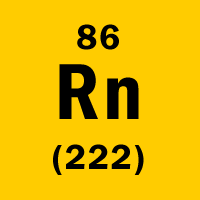 Seeing as January is National Radon Month, I thought it’d be a good idea to share some radon information for the New Year.
Seeing as January is National Radon Month, I thought it’d be a good idea to share some radon information for the New Year.
Radon is a naturally occurring, colorless, odorless, radioactive gas that is the second-leading cause of lung cancer behind smoking, with more than 21,000 deaths per year. Cigarette smoking quadruples the risk of lung cancer when mixed with radon exposure.
Radon comes from the nuclear disintegration of unstable uranium atoms in the ground. Radon is measured in picocuries per liter (pCi/L), or one-trillionths of a liter. The experts at the U.S. Environmental Protection Agency have set the “actionable level” at 4.0 pCi/L.
The average outside radon level is about 0.4 pCi/L. Our bodies are accustomed to this and can defend themselves from radon’s affects.
Radon by itself is not harmful: It’s in the same group of gases as helium, which is chemically inactive, but radon quickly turns into other radioactive elements once it gets into your lungs. The process takes less than an hour once radon starts to disintegrate: from uranium, to radon, to polonium, to lead (stable).
If all of these elements stayed as solids, there wouldn’t be much of a problem — but radon is a gas, and that’s how it gets into your lungs. Radioactive elements are very unstable and become a different element after a period of time until they stabilize.
Every time a radioactive element becomes a different element, a small amount of energy and matter is released, like a tiny explosion. This can damage your lung cells’ DNA, and when a damaged cell goes to make a copy of itself, it makes a “bad” copy, which becomes a cancer cell.
Radon gets into homes in many different ways, but the biggest cause is the house itself. Buildings create a natural vacuum of low pressure on the ground they’re built on. The vacuum created is so small that it is very difficult to measure — but that’s all it takes for radon to find its way in, especially when the heat is on or it’s very windy outside.
Cinder-block basements are especially susceptible to letting radon in. Fixing the problem can be a very simple process, but it depends on the building; each one is different, so the fixes can be quite different from house to house.
Most fixes involve drawing a small amount of air from under the house to prevent radon from getting in. If too much air is pulled from under the house, the problem becomes back-drafting natural gas appliances, which can cause carbon monoxide poisoning that can kill in minutes — whereas issues with radon generally take much longer.
For more information or to arrange for a free radon test, call Peter Diethrich at 970-563-0135 ext. 2238 or visit the Southern Ute Environmental Programs website at www.southernute-nsn.gov/environmental-programs/general-assistance-program.
